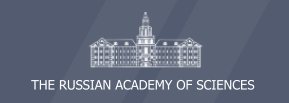Russian-German Youth Science School
From the 15th to 25th of August, 2017, the Institute of the Earth’s Crust SB RAS, together with the Ruhr University of Bochum (Germany) and under support of Russian Fund of Fundamental Research, held the Russian-German School for Young Scientists “Geology, geodynamics and hazardous geological processes in Pribaikalye (Asian part of Russia)”.
Scientific program of the School was oriented on contemporary problems of geology and geodynamics in the Asian part of Russia. The reports presented to the School dealt with the formation history of the largest geological structures in the Asian part of Russia and in Mongolia. More emphasis was placed on the Olkhon geodynamic test site in Pribaikalye in terms of its geological structure and geodynamic evolution, advanced methods for the study of the structures with data from remote sensing of the Earth and detailed structural-geological studies. Much attention was given to the study of the Baikal rift system, problems of recent geodynamics and seismicity, geological hazards, underground hydrosphere, grounds, perennially frozen rocks, and geoecology of Pribaikalye.
Plenary reports were presented by the scientists from the Institute of the Earth’s Crust and by Ruhr University lecturers: E.V. Sklyarov, T.M. Skovitina, Sebastian Breitenbach, Ola Kwiecie, E.A. Kozyreva, and S.V. Alekseev.
A field trip was conducted with visits to geological objects of the Olkhon geodynamic test site (Pribaikalye, Olkhon District of Irkutsk Oblast) and Tunka rift basin (Buryat Republic). The trip included field lectures with the demonstration of geological objects and their related field, experimental and remote studies. The features of formation of the collision zone and the unique geological objects were demonstrated by V.S. Fedorovsky, principal researcher at the Geological Institute RAS, Moscow. The excursion program was prepared by Z.L. Motova, V.A. Pellinen and A.M. Kononov, researchers from the IEC SB RAS.
The event of such format allowed young scientists and students to reach a better understanding of the features of geological structure and different processes responsible for modern appearance of the region, to exchange their opinions, and to discuss questions which had arisen therein. The beauty of the Baikal and the uniqueness of geological objects, deserving of the status of natural monuments, stirred the imagination of our colleagues from Germany. During the work of the School, consideration was given to the prospects for further cooperation and holding of regular events like that. We would like to thank all the participants and organizers who helped conduct the Russian-German School for Young Scientists “Geology, geodynamics and hazardous geological processes in Pribaikalye (Asian part of Russia)”.
Click here to see photos of the Russian-German School for Young Scientists “Geology, geodynamics and hazardous geological processes in Pribaikalye (Asian part of Russia)”.





